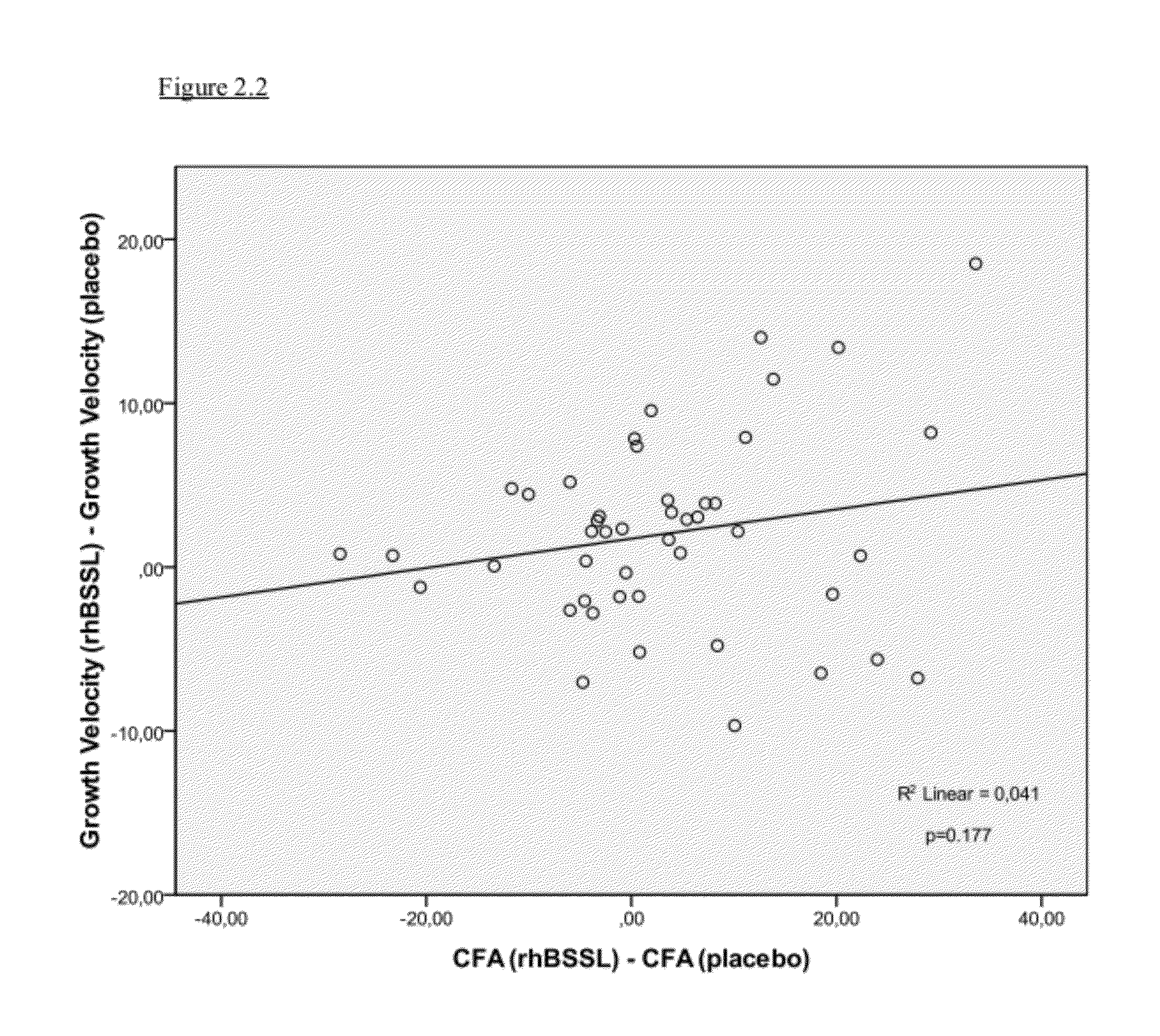Method to Increase the Growth Velocity of Human Infants
a human infant and growth speed technology, applied in the field of human infant growth speed increase, can solve the problems of increased risk of serious health problems, increased risk of infant mortality, and inability to practice breastfeeding, etc., and achieve the effect of increasing the growth speed of a human infan
- Summary
- Abstract
- Description
- Claims
- Application Information
AI Technical Summary
Benefits of technology
Problems solved by technology
Method used
Image
Examples
Embodiment Construction
[0056]In one aspect, the invention relates to a method to increase the growth velocity of a human infant, said method comprising the step of enteral administration of recombinant human bile-salt-stimulated lipase to said infant.
[0057]Recombinant human bile-salt-stimulated lipase (rhBSSL) useful in the invention is described, defined or referred to herein. For example, it includes polypeptides recognizable by a person of ordinary skill in the art as being human bile-salt-stimulated lipase, wherein said human lipase has been produced by or isolated from a non-human source, such as a non-human organism, adapted or modified (for example by recombinant genetic technology) to produce such polypeptide.
[0058]Human bile-salt-stimulated lipase (BSSL) is an enzyme known by various identifiers or aliases; for example, “carboxyl ester lipase (CEL)”, “bile-salt-activated lipase (BAL)”, “bile-salt-dependent lipase (BSDL)”, “carboxylesterase”, “carboxylic ester hydrolase” (CEH), and a number of oth...
PUM
| Property | Measurement | Unit |
|---|---|---|
| weight | aaaaa | aaaaa |
| weight | aaaaa | aaaaa |
| weight | aaaaa | aaaaa |
Abstract
Description
Claims
Application Information
 Login to View More
Login to View More - R&D
- Intellectual Property
- Life Sciences
- Materials
- Tech Scout
- Unparalleled Data Quality
- Higher Quality Content
- 60% Fewer Hallucinations
Browse by: Latest US Patents, China's latest patents, Technical Efficacy Thesaurus, Application Domain, Technology Topic, Popular Technical Reports.
© 2025 PatSnap. All rights reserved.Legal|Privacy policy|Modern Slavery Act Transparency Statement|Sitemap|About US| Contact US: help@patsnap.com


